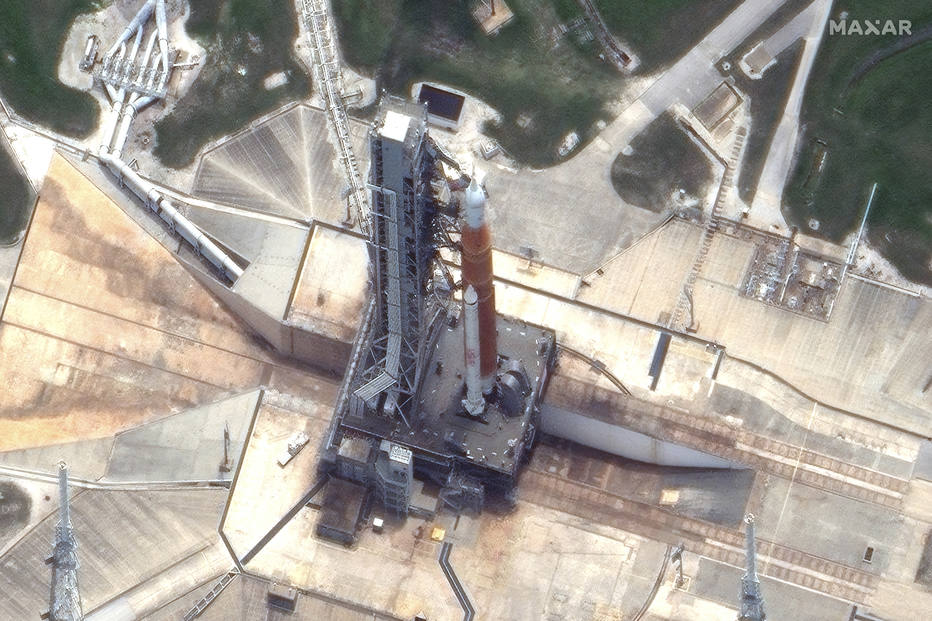On Monday, on its fourth attempt, what Nasa completed was basically a test countdown for the rocket that will take astronauts to the Moon.
But agency technicians said it was too early to know whether the test would be enough to give the go-ahead for the rocket, the Space Launch System, to launch the Orion capsule on a test flight around the moon without astronauts aboard.
Even if the countdown rehearsal had gone perfectly, this mission, Artemis 1, would likely not take off before the end of August. This flight will be the departure point for the United States to take astronauts back to the lunar surface more than half a century after the Apollo 17 mission.
On top of a launch pad at Kennedy Space Center in Florida, the rocket’s propellant tanks were filled for the first time with 890,000 liters of liquid oxygen and 2,400,000 liters of liquid hydrogen. Issues that had occurred during three previous attempts in April have been resolved.
“I think it was a very successful day, which once again achieved most of the goals,” director of release Charlie Blackwell-Thompson said during a press conference on Tuesday.
But a new problem arose: hydrogen leaking from a fuel connector. By heating and cooling the connector, engineers expected the seal to move far enough to stop the leak. But it did not work.
During an actual launch, this problem would have been the end of the countdown for the 98-meter-tall rocket.
But Monday’s exercise was what NASA calls a wet test — wet because of the actual flow of fuel in the tanks — designed to resolve glitches and procedures without the fuss of ignited engines and the rocket rising into space.
With the countdown paused at T-10 minutes, engineers came up with a plan where a valve would be closed to stop the leak and errors would be suppressed to allow the countdown to proceed to test other rocket components and launch procedures.
Blackwell-Thompson approved the plans and the countdown continued until, as expected, it ended with 29 seconds left. Liquid oxygen and liquid hydrogen were then drained from the rocket.
On Tuesday, NASA technicians said they had to analyze the data to see what they still need to do before they feel ready to launch the rocket. The Space Launch System and Orion, the capsule where the astronauts will stay, are essential components for Artemis, NASA’s program that must send astronauts back to the Moon.
Still, NASA technicians were ecstatic with the progress.
Thomas Whitmeyer, deputy associate administrator for common exploration systems development at NASA, said filling the tanks and counting down so close to zero were important milestones.
“We’re looking at the puzzle to see what pieces we still haven’t been able to put together,” Whitmeyer said. “But we’ve put a lot of pieces together and we have a good idea of where the puzzle is at this point.”
In April, three attempts at a wet trial ended early because of various problems. The rocket was taken to a giant garage, called the Vehicle Assembly Building, where technicians could more easily diagnose problems and make repairs. The hiatus also gave an outside supplier time to upgrade its facilities that supplied nitrogen gas – used to purge hazardous gases – at the Kennedy Space Center. During two of the trial attempts, interruptions in the nitrogen supply delayed the countdown.
NASA may decide to run one more wet test, or it may decide it has enough data and take the rocket back to the Vehicle Assembly Building one last time for final launch preparations, which include installing the self-destruct mechanism to destroy the rocket in case something goes wrong during the flight.
For Artemis 1, the rocket would launch and send the Orion capsule on a long journey around the moon. The capsule would then circle back to re-enter Earth’s atmosphere and dive into the ocean.
The second Artemis flight, scheduled for 2024, would have astronauts on board for a similar trip, without landing on the Moon. Artemis 3 will be the first lunar landing by astronauts since 1972. NASA has proposed a 2025 date for such a manned voyage, but could face further delays. / TRANSLATION BY RENATO PRELORENTZOU
–


